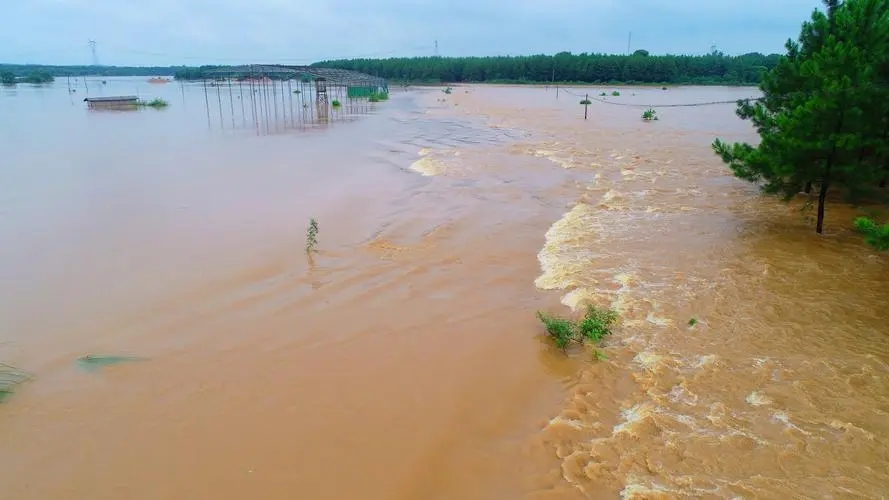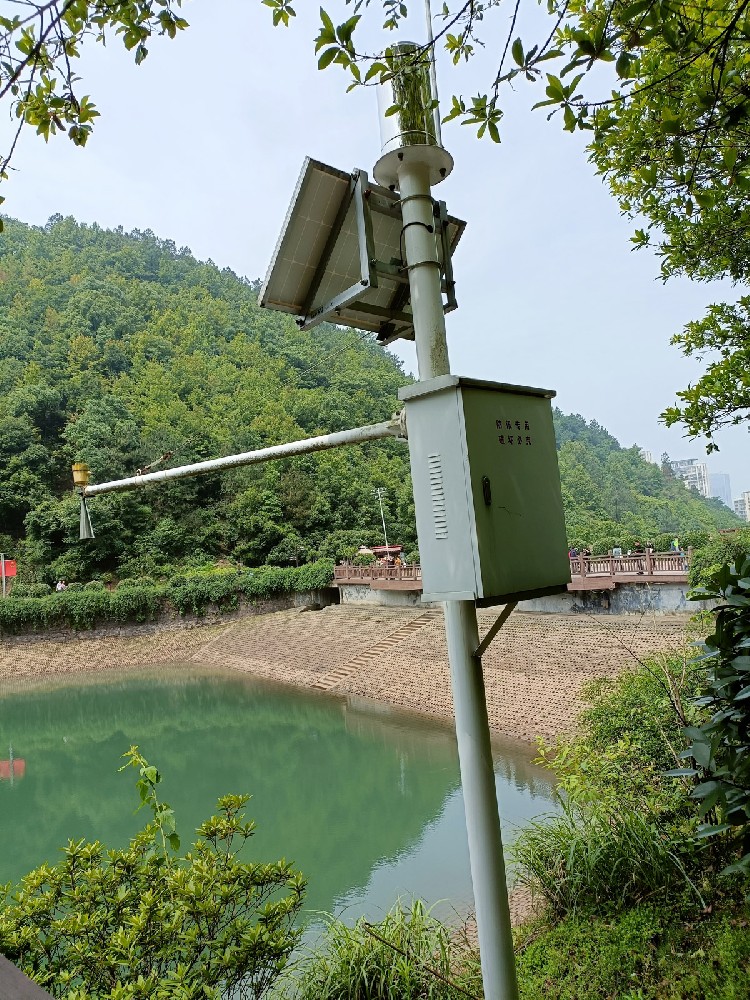

— Blogs —
—Products—
 Consumer hotline +8618073152920
Consumer hotline +8618073152920 WhatsApp:+8615367865107
Address:Room 102, District D, Houhu Industrial Park, Yuelu District, Changsha City, Hunan Province, China
Product knowledge
Time:2024-05-23 09:13:03 Popularity:385
An automatic meteorological monitoring station is a modern meteorological observation device that collects, processes and transmits meteorological data automatically and continuously. Automatic meteorological monitoring stations play a crucial role in urban flood warning.

The working principle of automatic weather monitoring station mainly relies on advanced sensor technology, data acquisition technology and communication technology. The following is a detailed explanation of its working principle:
Sensor Technology:
Automatic weather monitoring stations are equipped with various meteorological sensors, such as temperature sensors, humidity sensors, wind speed and direction sensors, and rainfall sensors. These sensors are capable of sensing and measuring various meteorological elements in the atmospheric environment in real time, such as temperature, humidity, wind speed, wind direction, rainfall, etc.
Data Acquisition Technology:
The sensors convert the sensed meteorological elements information into electrical or digital signals, which are then collected by the data collector. The data collector is the core part of the automatic meteorological monitoring station, which can control the measurement of the sensors and process, store and transmit the collected data.
Communication Technology:
Automatic weather monitoring stations transmit collected weather data to data centres or weather stations through wired or wireless communication technologies. Modern automatic weather monitoring stations usually use wireless communication technologies, such as GPRS, CDMA, 4G/5G, etc., to ensure real-time data transmission and remote monitoring.
Data processing and analysis:
At the data centre or weather station, the received meteorological data undergoes further processing and analysis. These processing include quality control of data, statistical analysis of data, and graphical presentation of data. Through processing and analysis, various meteorological reports, charts and warning information can be generated, providing important data support for meteorological forecasting, disaster prevention and mitigation, and scientific research.
The following are the details of the application of automatic meteorological monitoring stations in urban flood warning:
1. real-time monitoring of rainfall: automatic meteorological monitoring station can monitor rainfall in real time, timely and accurately grasp the intensity of rainfall and cumulative rainfall, providing scientific basis for flood warning.
2. Predicting flood trends: By collecting historical rainfall data and real-time rainfall data, the automatic meteorological monitoring station can use meteorological models to predict the rainfall trends in the coming period of time, so as to predict the development trend of floods.
3. Issuing early warning information: When abnormal rainfall conditions are monitored or when flooding is predicted to be likely to occur, the automatic meteorological monitoring station will send early warning information to the relevant departments in time, so that timely countermeasures can be taken.
4. Assisting in decision-making on flood prevention: The meteorological data collected by automatic meteorological monitoring stations can help government departments and flood prevention agencies to formulate flood prevention measures and contingency plans, so as to improve flood prevention and disaster mitigation capabilities.
5. Assessing disaster risk: Data from automatic meteorological monitoring stations can be used to assess the risk of flooding and provide reference for urban planning and construction.
6. Raising Public Awareness: Automatic meteorological monitoring stations can also be used to raise public awareness and preparedness for flood disasters, and disseminate flood disaster warning information to the public through various channels.
The following are some examples of successful flood warning cases, demonstrating the key role of automatic meteorological monitoring stations and other early warning systems in preventing floods:
Example 1: An automatic meteorological monitoring station on the outskirts of a city monitored that rainfall would reach 50 mm within two hours, reaching the warning threshold. The monitoring station immediately sends warning information to the city meteorological bureau and relevant departments, and at the same time releases warning alerts to the public through various channels, such as SMS, TV and the Internet, to remind residents to pay attention to the prevention of possible flooding and geological disasters.
Example 2: In a rainy season, a city's automatic meteorological monitoring station, by analysing historical and real-time rainfall data, predicted that there would be a heavy rainstorm in the next few days, which might cause urban flooding. The automatic meteorological monitoring station sends early warning information to the relevant departments in advance so that timely flood prevention measures can be taken, such as strengthening the operation and maintenance of the urban drainage system and evacuating flood-prone areas.
Example 3: During the monitoring of heavy rainfall in a city, the automatic meteorological monitoring station found that the intensity and cumulative rainfall increased rapidly, exceeding the warning threshold. The monitoring station immediately activates the early warning mechanism and releases early warning information to the flood prevention department, the emergency management department and the public through telephone calls and text messages, reminding them to pay attention to the prevention of flooding and urban waterlogging.
Example 4: During a typhoon season, an automatic meteorological monitoring station in a coastal city monitors the imminent landfall of a strong typhoon, which may bring strong winds and torrential rain. The monitoring station sends timely warning information to relevant departments to facilitate advance typhoon prevention work, such as moving residents in dangerous areas, reinforcing buildings, and preparing emergency supplies.
Example 5: When constructing automatic weather stations in a city, a number of automatic weather monitoring stations were set up in different areas, taking into account the topography of the city and the distribution of buildings. During a rainstorm, the rainfall data transmitted in real time from the monitoring stations indicate that a certain low-lying area receives a large amount of rainfall and is prone to flooding. Upon receiving the early warning message, the relevant departments took prompt measures, such as opening the cover of the drainage manhole and activating the drainage pump, to effectively reduce the risk of inland flooding.
These successful flood warning cases show that automatic meteorological monitoring stations and other early warning systems play a key role in the timely detection of rainfall anomalies, the release of early warning information, and the organisation of mass transfers, which effectively reduces the impact of floods on the safety of people's lives and property.

In conclusion, automatic meteorological monitoring stations play an important role in the early warning of urban floods, which can help the relevant departments to discover abnormal rainfall conditions in a timely manner, predict the development trend of floods, issue early warning information, assist in flood prevention decision-making, and improve the public's understanding of floods and awareness of flood prevention, so as to reduce the impact of floods on the safety of life and property of urban residents.
Prev:Automatic Weather Station for Blueberry Farming
Next:Introduction and functions of automatic weather stations
Related recommendations
Sensors & Weather Stations Catalog
Agriculture Sensors and Weather Stations Catalog-NiuBoL.pdf
Weather Stations Catalog-NiuBoL.pdf
Related products
 Combined air temperature and relative humidity sensor
Combined air temperature and relative humidity sensor Soil Moisture Temperature sensor for irrigation
Soil Moisture Temperature sensor for irrigation Soil pH sensor RS485 soil Testing instrument soil ph meter for agriculture
Soil pH sensor RS485 soil Testing instrument soil ph meter for agriculture Wind Speed sensor Output Modbus/RS485/Analog/0-5V/4-20mA
Wind Speed sensor Output Modbus/RS485/Analog/0-5V/4-20mA Tipping bucket rain gauge for weather monitoring auto rainfall sensor RS485/Outdoor/stainless steel
Tipping bucket rain gauge for weather monitoring auto rainfall sensor RS485/Outdoor/stainless steel Pyranometer Solar Radiation Sensor 4-20mA/RS485
Pyranometer Solar Radiation Sensor 4-20mA/RS485
Screenshot, WhatsApp to identify the QR code
WhatsApp number:+8615367865107
(Click on WhatsApp to copy and add friends)